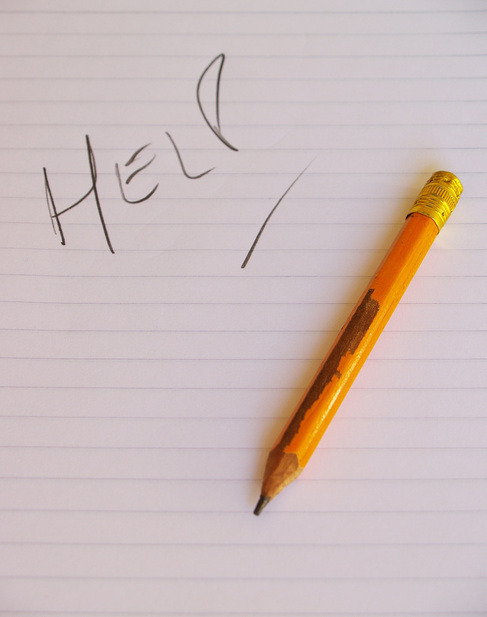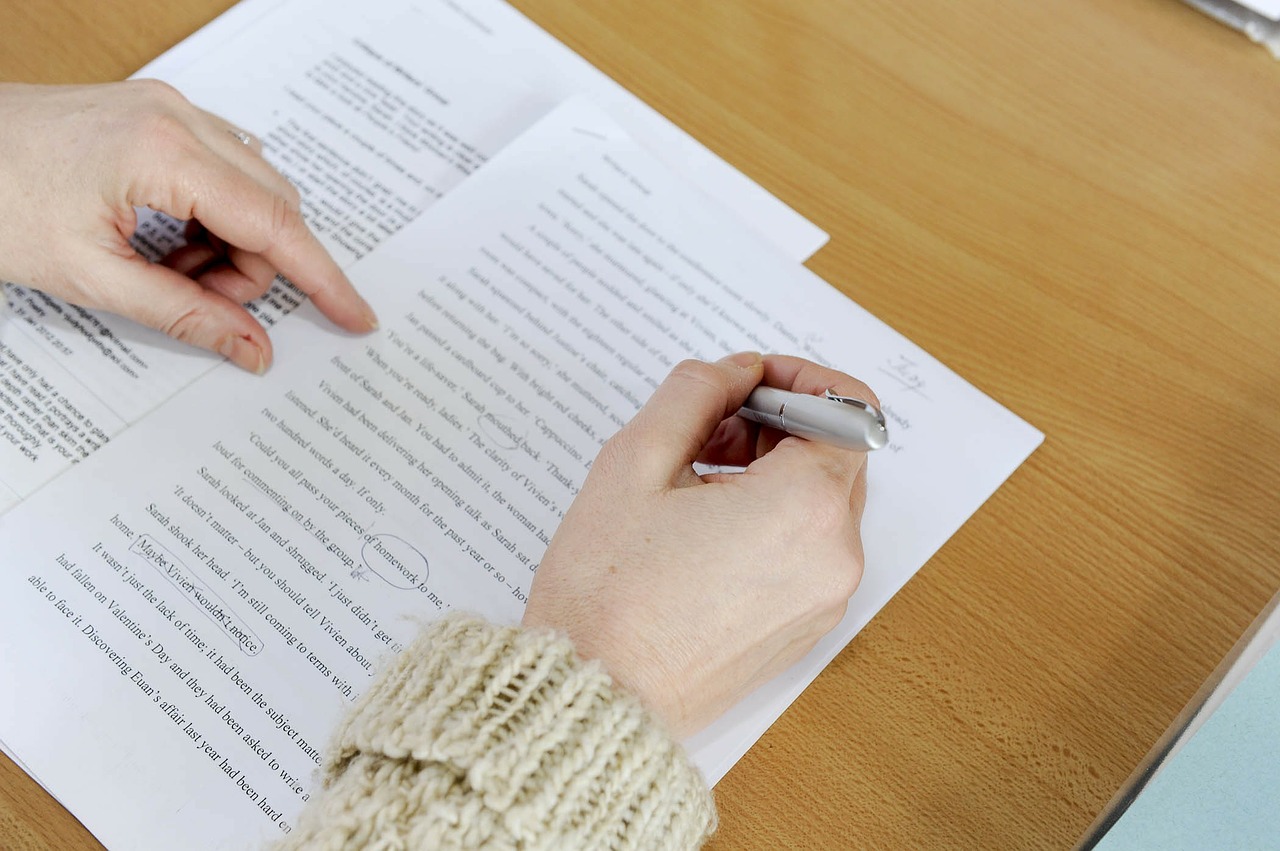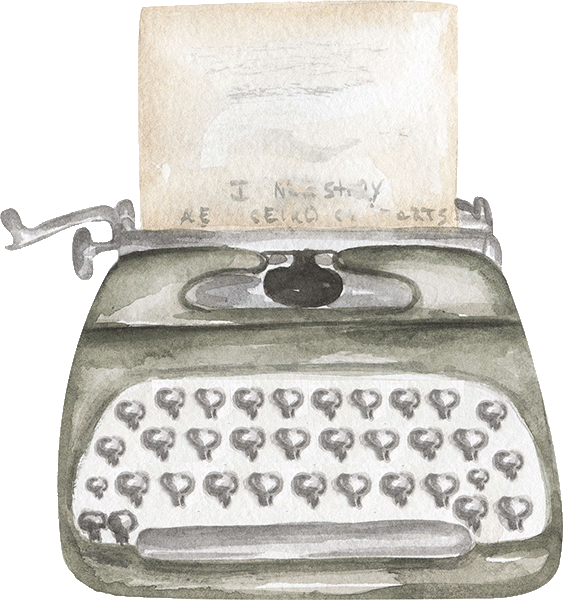
If you think I’m about to tell you how NOT to edit, you’re wrong. I’m just going to tell you how to edit without pain.
What? you say. That’s impossible! The definition of editing is ‘a painful process by which authors attempt to improve their books.’
That’s not true! Editing doesn’t have to be awful!
Of course is does!
Well, aren’t we Mr. Optimistic! Shut your pessimistic mouth and listen! I’m about to give you a five-step guide to editing your novel!
This is what I’m doing right now with The Lady of the Vineyard. 🙂

Step One: Break
Your novel is finished! You’re excited and happy and a little bit exhausted! Time to start editing, right?
Wrong.
Time to take a break.
I’m not suggesting ‘set is aside for a year.’ Or yet a month, which I consider too extreme unless the next month happens to be December (see NaNoWriMo) in which case that makes sense.
But most of the time … I’m suggesting a week. A week in which you don’t do anything. That includes working on other projects! Blog a little more. Respond to those emails that are backing up. Read like a crazy … reader. DON’T YOU DARE WRITE; DON’T YOU DARE EDIT! TRY NOT THINK ABOUT YOUR BOOK AT ALL! You can do it! I know you can!
It’s great if you can schedule this week full of activity off the internet, though. I was at horse camp for a week after I finished The Lady of the Vineyard. That was really great!

Step Two: Revision
When this week is up? Come back, read through your novel once, making notes on what needs changed. As you go, you can pick out typos, add in a scene or two, trash the first draft bilge, etc. Don’t concentrate too much on improving sentence structure or anything … this is mostly just for the plot and a little for the characters. Make your novel make sense.
For a novella like The Lady of the Vineyard, this doesn’t take long, especially since I tend to revise while writing. 😛

Step Three: A Second Pair of Eyes or Another Break
If at all possible, have other people look at your book now. Ask them to read it only for the plot and characters. Have them point out where something doesn’t make sense, where a character could be better-developed. Let them give their opinion on whether this story has potential or not.
I know, I know. This is going to take a lot of bravery, but you can do it! Just close your eyes and give someone from NaNoWriMo or a not-so-close friend who’s able to be subjective a link to the Google docs. Read the comments s/he makes, and do another revision. If s/he is good enough to add notes about sentence structure or point out typos, take it!
This isn’t a possibility? Ha! You just sold yourself in for another break (though this time I would probably work on something else in the meanwhile). That’s right. Put it aside again, then return, and read through it once more. Try to be subjective. Check out the plot, characters, setting, pacing, and conflict. Make sure it’s all neat and tidy. Move on to step four.

Step Four: Editing!
This is your ordinary editing. This is where you double-check your grammar, your spelling. This is where you spend hours trying different sentence structures. Here are a few things that can help:
- Change the font of your manuscript. Seriously. This does wonders. Try it.
- Make sure to print it up. Don’t edit on the computer, guys! Not only is it bad for yours eyes, but it gives you a headache. Print up a copy of your manuscript; edit it using a pen. Or a pencil.
- Look for mistakes you have made time and time again. Like lose vs. loose. WHY CAN’T I GET THIS???!!!
- Let other people look at it again. I’m not saying hire a professional editor, though that’s probably a good idea. You can get to know other writers on the internet and ask them for their help … oftentimes people will read over your novel for free! But, you know, even your mother or cousin or best friend can be a great help. Biased people can pick out typos, too. 😛
Now, this is where people tend to get stuck on a four-step treadmill.
- Print up your manuscript
- Edit
- Type the changes up on your computer
- Repeat.
This can go on for months. It sure did with The Dressmaker’s Secret. But I’m sick of running that treadmill! It’s getting me nowhere fast! So what can you do about it?
- Say “I’m Done!” This is where my stopping place is. I’ve finished.
But how can you possibly do that? After all, your novel NEVER seems to be perfect! There’s always one more typo, one more problem, one more sentence that could be better, one more scene that feels off.
But now is the time to move on to greater things. So after you’ve gone through a couple drafts, taking breaks in between, STOP.

Step Five
It’s as good as it’s getting until it’s published! If you’re self-publishing, it’s time to format it and upload it. I suggest Createspace … it’s relatively easy, and the books really do look nice. On Createspace, you can order a printed proof. I’d advice you to do this. Once it arrives, read through it and take out the typos. Then update the copy.
And you’re done … if you weren’t skimming. *suspicious glare* You weren’t skimming, were you?

The End!
What? you say. That doesn’t sound easy!
Well, I didn’t say it’s easy! I just said it’s not painful. There’s a difference! It just requires a little hard work.
But I don’t like hard work!
Yes, but wouldn’t you like to see your novel published? This is the only way, unless you’d rather give it over to someone else and let all of you be ripped out of your novel, which of course you don’t want!
Now, I think that’s about it for today. TTFN!
~Kellyn Roth
p.s. Don’t forget to comment!


42 Responses
Thanks for this post! I am in the middle of editing my book, and it’s kind of a disaster. The thing is, my mom is editing it. (and I do read over it, too) This is what we’re looking for, all in one read: 1. looking for typos; 2. seeing how sentences could be written better, and 3. putting words that say that there needs to be more details. The problem is, this needs to be done relatively soon. (Before Christmas, at the very least) It’s HARD!! 😛
Also, do you title your chapters? I don’t know if I should or not. Of course, your books are for teens-adults, (right?) and mine targets the younger audience. So what do you think is better?
CutePolarBear
I think it depends on your preference. I’ve read novels of all genres aimed at all ages with or without chapter titles. Do you have ideas for chapter titles? Use them. You don’t? Forget about it; it’s not worth it. For TDS, I use chapter titles; for TLOTV I don’t.
Is it a super long book? I find I can edit at least a chapter a day … yesterday I edited five chapters of a novel! I think it’s mostly about putting your nose to the grindstone.
Okay, thanks for the advice! 🙂 For your two different books, did you intentionally do the chapters a different way?
Wow, five chapters a day is a lot! Unfortunately, my book isn’t very big. It’s got 40-something pages (that’s 11 x 8 1/2″ paper) and 17 chapters. I wish it was bigger, (I will add more than I will take away, but still) but I feel like I’ve introduced the characters well enough, and the like. 😉
CutePolarBear
Shorter books are always good! And … no, I didn’t. I haven’t really determined everything with The Lady of the Vineyard, though, so we’ll see how that turns out.
Okay, I see. 🙂
Thanks for the tips! LOVE the cover.
Thank you! I’m not sure if that’s the cover I’m going to stick with or not. 😛
“The definition of editing is ‘a painful process by which authors attempt to improve their books.’” I really appreciated this sentence and the tips you gave to make it untrue. 😉
Thank you! I’m glad you enjoyed the post. 🙂
This is great! Thanks for sharing 🙂 I’m still on first draft, but I will definitely be using this later
Glad I could help! (assuming my theory is correct … it’s been working for me so far, but I haven’t practiced it ALL that long)
This is one amazing post, Kellyn!
Thank you! 😀
Great post, Kellyn!! Are you going to self publish Lady of the Vineyard also?
Yes, hopefully in autumn of this year. I’m hesitating to set a date, though. 🙂
I like it! (Now, I just have to force myself to do it…) 🙂
Yep, editing is an ‘easier said than done’ thing.
AHHHH THANK YOU SO MUCH FOR THIS. This is incredibly helpful.
Glad I could help! Good luck editing. 😛
Great tips!
Thanks for the post! I actually haven’t gotten to the point of revising a novel yet *coughcough* but I’m working on it so this is helpful! Only thing is that I don’t revise much while I’m writing the first draft so I have to spend a lot of time fixing everything, hehe…
Also the cover for The Lady of the Vineyard is beautiful! 😀
You’re welcome, thank you, etc. 🙂 You know me … I keep going back and revising while I’m writing all the time. 😛
Hehe, maybe my writing would improve if I did that…
Maybe. Mine sure hasn’t. 😉
Haha, I don’t think so. I love your writing.
Ah, thanks! 😀 I, for one, read my writing and hit myself. 😉
I hope you mean you “hit” yourself by patting yourself on the back! 🙂
Yeah … riiiiiight. 😉
Lovely post! I was wondering, can you do a post on how to actually start writing the novel? If you can’t, I totally understand, of course. 🙂
Well, that’s a somewhat subjective subject, but I might try at some point. I don’t know. It depends on if I can actually figure out how to do it myself. 😉
Thank you! I understand. 🙂
I tend to edit a bit when I go too! One of the last books I really worked on, I printed the entire thing out and went through it by hand. I much preferred that to sitting behind the computer. Again. 🙂 Great post!
Yes, sitting behind a computer can get really … well, painful. 😀
Yes, especially when I’m constantly behind the computer for school too…
I don’t do much of my school on the computer, but I can see what you mean!
Hey! I have a quick question. How do you make your lovely book covers?
A friend of mine from NaNoWriMo makes them for me. 🙂
Well, I made the one from The Lady of the Vineyard myself with Createspace’s cover creator, but the rest were made by my friend.
Just found your blog and really enjoyed this post! I am pursing becoming a freelance editor, and as much as I love editing for other people, editing my own works of fiction can be a pain! This was very encouraging and you had some very excellent tips that I will be sure to incorporate. Editing may require your brain to be awake, but it is SO rewarding. (And sometimes it can even be fun!)
Abi | theleft-handedtypist.blogspot.com
I like the revising part a lot more than the actual editing … but it can be fun! I’m glad you liked the post! 😀